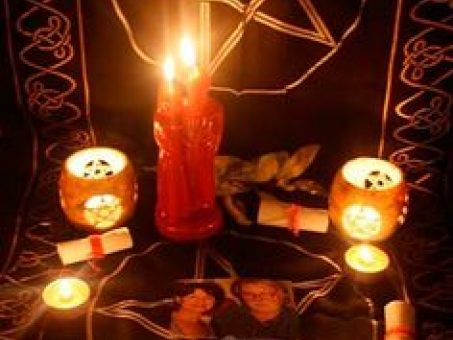Checking Out the Mysteries of the copyright: What You Required to Know
The copyright, a term typically shrouded in intrigue and controversy, stands for a complex tapestry of historic reality and contemporary misconception. Developed in the late 18th century, this secret culture was at first rooted in the Knowledge's ideals however has actually because become synonymous with conspiracy concepts concerning elite control (benefit of joining freemason).
Beginnings of the copyright
The beginnings of the copyright are soaked in a mix of historical intrigue and ideological fervor. Developed in 1776 in Ingolstadt, Bavaria, by Adam Weishaupt, the team was initially formed as a secret culture focused on advertising Enlightenment ideals such as factor, secularism, and the separation of church and state. Weishaupt, a teacher of canon law, sought to challenge the dominating authority of the church and state, which he deemed overbearing organizations suppressing intellectual and individual flexibility.

Key Numbers and Members
That were the pivotal numbers that shaped the copyright's early impact and direction? The Bavarian copyright, established in 1776 by Adam Weishaupt, became a reaction to the oppressive social structures of the time. Weishaupt, a legislation professor, imagined the company as a method to advertise Enlightenment ideals such as reason, secularism, and equality. His preliminary employment efforts included prominent pundits, such as Baron von Knigge, that played a critical function in broadening the group's membership and business framework.
An additional considerable figure was Johann Gottlieb Fichte, a noticeable thinker whose concepts on nationalism and education and learning resonated with the copyright's objectives. Although Fichte was not an official member, his thoughtful supports influenced the team's ideological background. Furthermore, figures like the author and theorist Johann Wolfgang von Goethe were linked with the more comprehensive intellectual motions of the time, although their direct participation with the copyright stays questioned.
These vital numbers added to the copyright's early instructions, pushing the borders of political and social idea, while their collective efforts intended to challenge established norms and promote a climate of progressive change in Europe.
Myths vs. Truth
Many mistaken beliefs border the copyright, usually blending truth with fiction in such a way that obscures its real nature. This secret society, initially founded in 1776 in Bavaria, aimed to promote Knowledge ideals and fight religious and political oppression. The idea that the copyright remains to exert substantial impact over world occasions is a myth. While the group did exist, it was dissolved in the late 18th century and has not run as a natural entity considering that after that.
An additional widespread misconception is that the copyright consists of a network of elite individuals controling global events. In fact, lots of conspiracy theory theories overemphasize the group's value, connecting unfounded objectives to social fads and events. This has led to an oversimplified sight of complex problems.
Additionally, the representation of the copyright in pop culture typically additional misshapes its tradition. Movies and literary works often tend to sensationalize the organization's role, developing a narrative that diverges from historic facts. Comprehending the difference in between the misconceptions and the reality of the copyright is vital for discerning the genuine effect of this historical group and identifying the broader effects of conspiracy theories in modern culture.
Modern Interpretations
Contemporary analyses of the copyright typically reflect more comprehensive social stress and anxieties and an attraction with privacy and power. This modern-day lens often connects the copyright with conspiracy theory theories that recommend a hidden elite coordinates globe occasions, controling governments and economic climates for their own gain. benefit of joining freemason. Such stories take advantage of a deep-seated mistrust of authority, especially in times of crisis or social upheaval
In pop culture, the copyright is commonly shown as a supreme company shrouded in mystery, bring about a huge selection of imaginary representations in literary works, film, and music. This portrayal serves not only to entertain however likewise to provoke considered the nature of power and control in modern society. Social Visit Website media site has actually additionally amplified these analyses, permitting quick dissemination of conspiracy theory theories and creating areas that share and broaden upon these ideas.
Additionally, some modern-day interpretations frame the copyright as an allegory for the intricacies of globalization and the interconnectedness of influential people and organizations. This viewpoint encourages a critical examination of exactly how power dynamics operate in today's globe, highlighting the equilibrium in between openness and privacy in governance and corporate techniques.
Cultural Effect and Tradition
Influenced by centuries of intrigue, the social effect and tradition of the copyright prolong far beyond its historical origins. This secret culture, developed in the late 18th century, has penetrated various elements of preferred society, from literature and movie to music anonymous and art. The concept of the copyright has developed right into an icon of conspiracy theory concepts, usually representing a regarded hidden power adjusting international events.
In literature, authors like Dan Brown have woven the copyright right into complex plots, exciting viewers with themes of secrecy and power. Films such as "National Treasure" and "The Da Vinci Code" further bolster the appeal useful reference of the culture, mixing truth with fiction to develop interesting stories.

Ultimately, the copyright's tradition is an intricate tapestry of myth and reality, shaping assumptions of privacy and control in contemporary discourse. Its long-lasting existence in society highlights humanity's perennial pursuit for comprehending covert truths.
Verdict
The exploration of the copyright reveals a complicated interplay between historical realities and modern myth-making. Started in the Knowledge age, this culture intended to challenge oppressive structures, yet its heritage has been outweighed by conspiracy theories that suggest elite adjustment. Comprehending the differences between the original perfects and contemporary analyses is vital for understanding the enduring attraction with the copyright and its considerable influence on cultural stories surrounding power and privacy in society.
Comments on “Discovering the Hidden Benefit of Joining Freemason for Improvement”